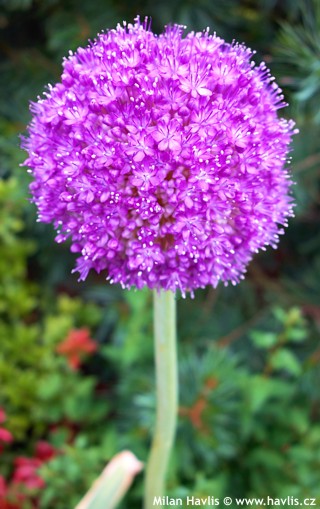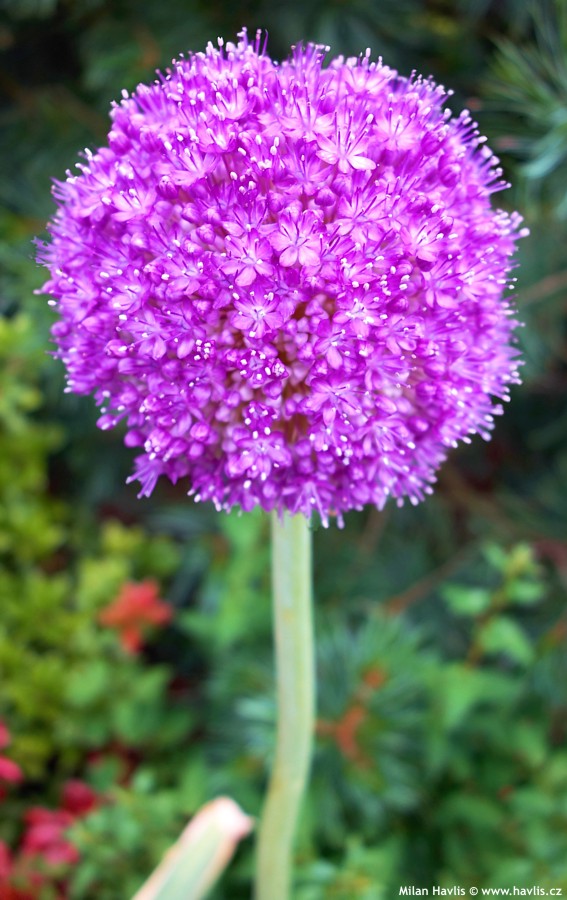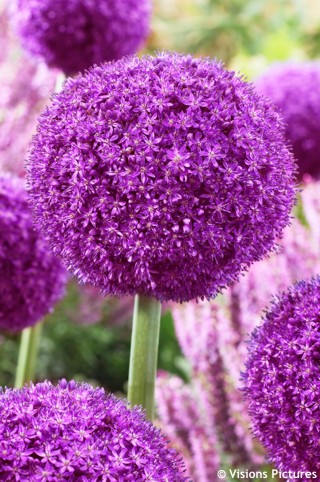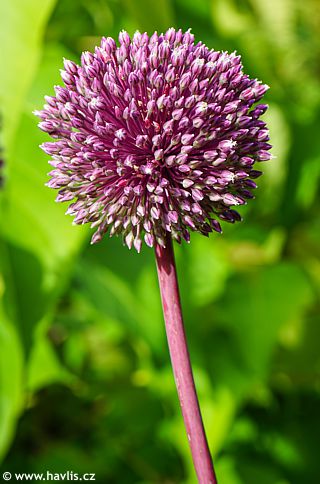Allium giganteum ornamental onion, giant onion


Allium
Ornamental onion is an attractive bulbous perennial commonly found all around mountainous regions of northern hemisphere. Most sought-after varieties are those with huge globular inflorescence in mid spring, yet there are others that bloom in the middle of summer offering handsome foliage all season round.
Giant onion is an aptly named ornamental onion from Central Asia. Possibly the tallest of all onions it makes almost 1.5 m tall stems with 12-14 cm wide, globular inflorescence, composed of numerous small, rich purple violet flowers. They open as early as in late May the strap-shaped, pale green, basal leaves begin to die back. You can remove them just after flowering, or let them wilt and compost in situ if their unsightly state is not irritating.
Large flowered ornamental onions need very well-drained soil or sand-based loam, and location in full sun. Avoid soils that remain wet especially when the plant is dormant. Should you have no other choice dig up the plant in midsummer, and plant it in a pot that is kept away from excess rain until early spring when it can be transplanted to the ground again, now with new roots that developed in the pot during dormancy. The bulb should be at least 5 cm or better 10 cm below the ground level. The stems are strong enough to withstand common weather caprices, however, open and exposed locations (windy seaside, large open fields, smooth mountain slopes etc.) are not recommended. In spite of the garlic/onion smell no part of the plant is edible. Hardy to about. -34°C (USDA zone 4).
Last update 25-01-2018






































